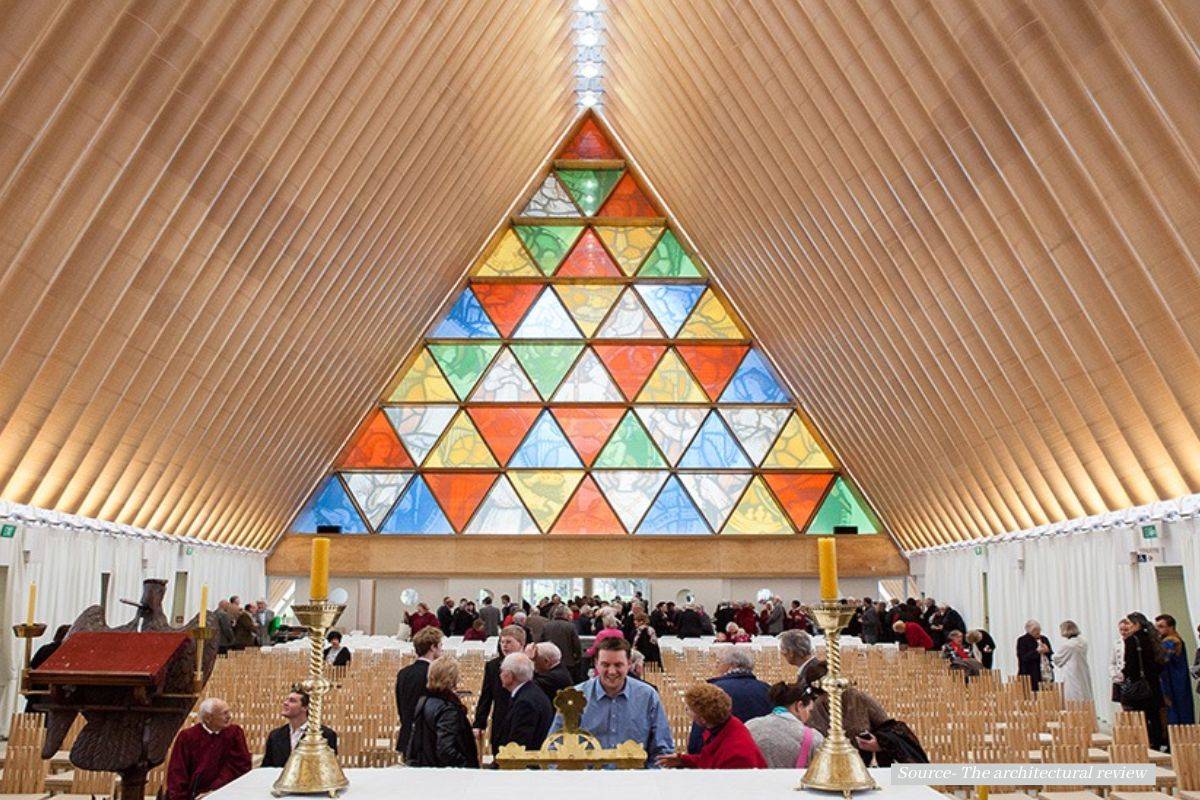
08-11-2023
Architecture
The cardboard church of Shiregu Ban
Sacred architecture: the case of New Zealand's cardboard church built after an earthquake. An ecological and inclusive worship building with a broad contemporary outlook
After the strong earthquake of 2011 (magnitude 6.3 on the Richter scale), the town of Christchurch, New Zealand, was left with many of its major buildings collapsed. Among them: the 1864 Anglican cathedral.
Hence it was decided to call the Japanese architect Shiregu Ban, known as the "disaster architect", to build a temporary replacement church site. The particularity of his design? The use of an economic material such as cardboard. The 96 cardboard tubes, that make up the structure of this worship building, reinforced with laminated wood beams, are "coated with waterproof polyurethane and flame retardants".
What are the benefits? Low cost and quick construction. In fact, this church of a capacity of 700 people, was made immediately accessible, after only two years of constructions.
In conclusion the Shiregu Ban church is just one of many examples of environmentally friendly architecture built after an environmental disaster. Christchurch was also cited by Lonely Planet as one of the places to visit at least once in a lifetime, and the renowned cardboard church was cited among its reasons. In addition to this example, the same architect intervened also in many other catastrophic contexts such as in Italy after the Aquila earthquake, but also in New Orleans after a hurricane (Cardboard Cathedral)
Hence it was decided to call the Japanese architect Shiregu Ban, known as the "disaster architect", to build a temporary replacement church site. The particularity of his design? The use of an economic material such as cardboard. The 96 cardboard tubes, that make up the structure of this worship building, reinforced with laminated wood beams, are "coated with waterproof polyurethane and flame retardants".
What are the benefits? Low cost and quick construction. In fact, this church of a capacity of 700 people, was made immediately accessible, after only two years of constructions.
LITURGICAL FURNITURE MADE OF WOOD AND CARDBOARD
Once inside the church of Christchurch, the cardboard tubes remain visible to the worshipper, although they do not burden the large single-aisle space. As for the liturgical furniture, this perfectly matches the characteristics of the building. The material used for the construction of the sacred furniture was made of wood but also of cardboard, a material that is a synonym of an ecological soul. Another special feature of the church? The large stained-glass window that is a real puzzle of colored containers shaped in a triangular form. A play this of lights and colours that gives a touch of lightness to the entire church structure.In conclusion the Shiregu Ban church is just one of many examples of environmentally friendly architecture built after an environmental disaster. Christchurch was also cited by Lonely Planet as one of the places to visit at least once in a lifetime, and the renowned cardboard church was cited among its reasons. In addition to this example, the same architect intervened also in many other catastrophic contexts such as in Italy after the Aquila earthquake, but also in New Orleans after a hurricane (Cardboard Cathedral)
